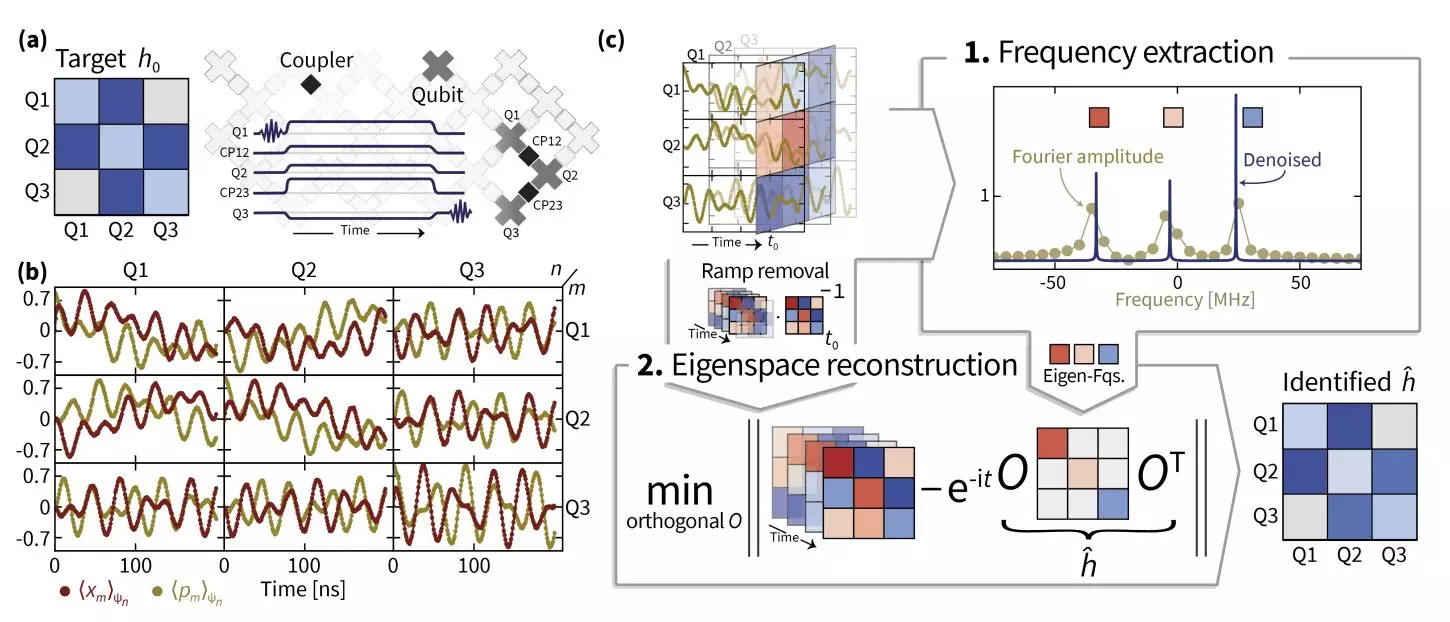Recent innovations in quantum computing continue to rapidly transform the landscape of scientific research. A collaborative study conducted by researchers from institutions including Freie Universität Berlin, the University of Maryland, Google AI, NIST, and Abu Dhabi presents a groundbreaking approach to estimating Hamiltonian parameters associated with bosonic excitations in superconducting quantum simulators. These advancements, detailed in a paper pre-published on arXiv, hold potential implications for next-generation quantum simulations that outstrip the capacities of classical computational methods.
The roots of the study trace back to a pivotal moment when Jens Eisert, the lead author, received a call during a conference in Brazil from the Google AI team. They encountered significant obstacles while trying to calibrate their Sycamore superconducting quantum chip using Hamiltonian learning techniques. With initial confidence, Eisert hypothesized a straightforward solution, only to quickly confront a complex challenge: accurately recovering the frequencies of the Hamiltonian operator. This shortcoming hindered their ability to derive an effective Hamiltonian from their datasets.
Eisert’s realization of the problem’s intricacy led him to recruit two talented Ph.D. students, Ingo Roth and Dominik Hangleiter, to brainstorm strategies for resolution. The trio began exploring concepts linked to superresolution, a method for enhancing the precision of eigenvalue estimation, but the application of these theoretical frameworks proved gnarly as they gradually came to terms with the practical limitations of data extraction and system behavior in experimental settings.
Innovative Solutions: Harnessing Superresolution and Manifold Optimization
Throughout the project, the researchers employed a variety of robust techniques. One of the significant contributions was the development of a new superresolution methodology aptly named TensorEsprit. This innovative technique focuses on resolving Hamiltonian frequencies with precision. Coupled with manifold optimization, which utilizes specialized algorithms for addressing complex problems native to curved spaces, the team was able to effectively recover eigenspaces associated with the Hamiltonian operator.
This was not merely an academic endeavor; the researchers recognized that for their methods to produce reliable Hamiltonian estimates, understanding the subtleties of how the system transitioned between states was crucial. They faced significant hurdles, as non-instantaneous and imperfect switching in quantum operations complicates attempts to fit a true Hamiltonian evolution. Nevertheless, through iterative experimentation and analysis, they shaped strategies that ultimately led to accurate Hamiltonian recovery even in large systems comprising up to 14 coupled superconducting qubits.
The Importance and Implications of Hamiltonian Learning
One of the study’s striking revelations was the rarity of successful implementations of Hamiltonian learning in practical scenarios. Eisert points out that many researchers may be discouraged from sharing findings on Hamiltonian learning due to the inherent difficulties involved in translating theoretical frameworks to experimental applications.
The anticipation that their work could inspire further research into Hamiltonian parameter characterization within quantum processors marks a major milestone. Their initial findings suggest that the techniques they have developed are not only scalable but can also be integrally applied to more extensive quantum hardware setups, thus broadening the horizons for high-precision quantum simulation.
Looking ahead, the Eisert group aims to expand their methodologies to incorporate interacting quantum systems and tensor networks—that is, quantum systems characterized by arrays of interconnected elements, as intuitively conceptualized by physicist Immanuel Bloch. This trajectory reinforces the importance of comprehending Hamiltonian operators—a discussion often glossed over even in introductory quantum mechanics courses.
Ultimately, the imperative to discern the Hamiltonian from empirical data will further sharpen as quantum technologies advance. As innovations in experimental techniques continue to develop, the ability to explore quantum systems with unprecedented accuracy may soon become a reality.
The interplay of theory and experimentation that underpins this research underscores the foundational role of Hamiltonian learning in quantum mechanics. Enhanced understanding of Hamiltonian parameters has profound implications—not only for academic inquiry but also for the realization of innovative quantum technologies. The work outlined by Eisert and his colleagues reflects a vital step forward in analog quantum simulation, unlocking new possibilities for the exploration of complex quantum phenomena in controlled laboratory settings. The future of high-precision quantum science and technology appears promising as researchers continue to address foundational questions about the nature and identification of Hamiltonian operators in quantum systems.

